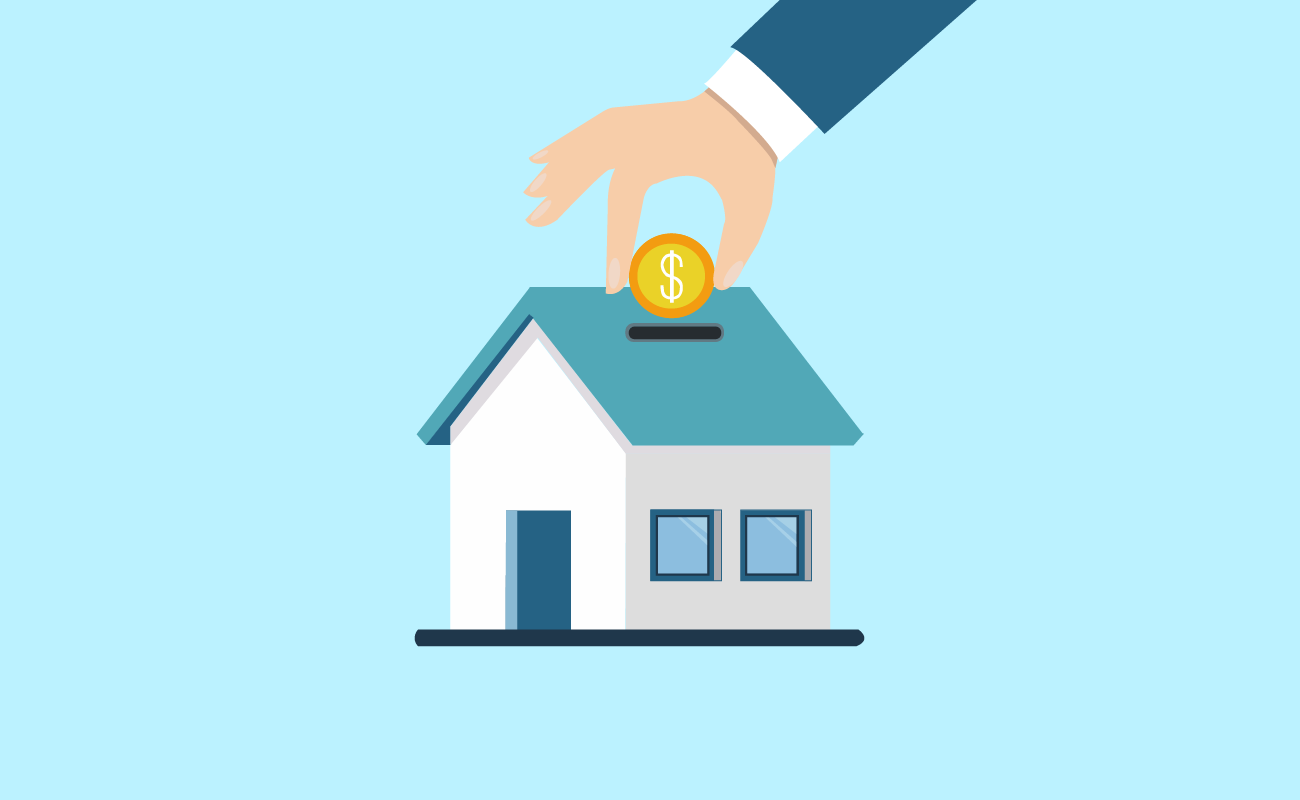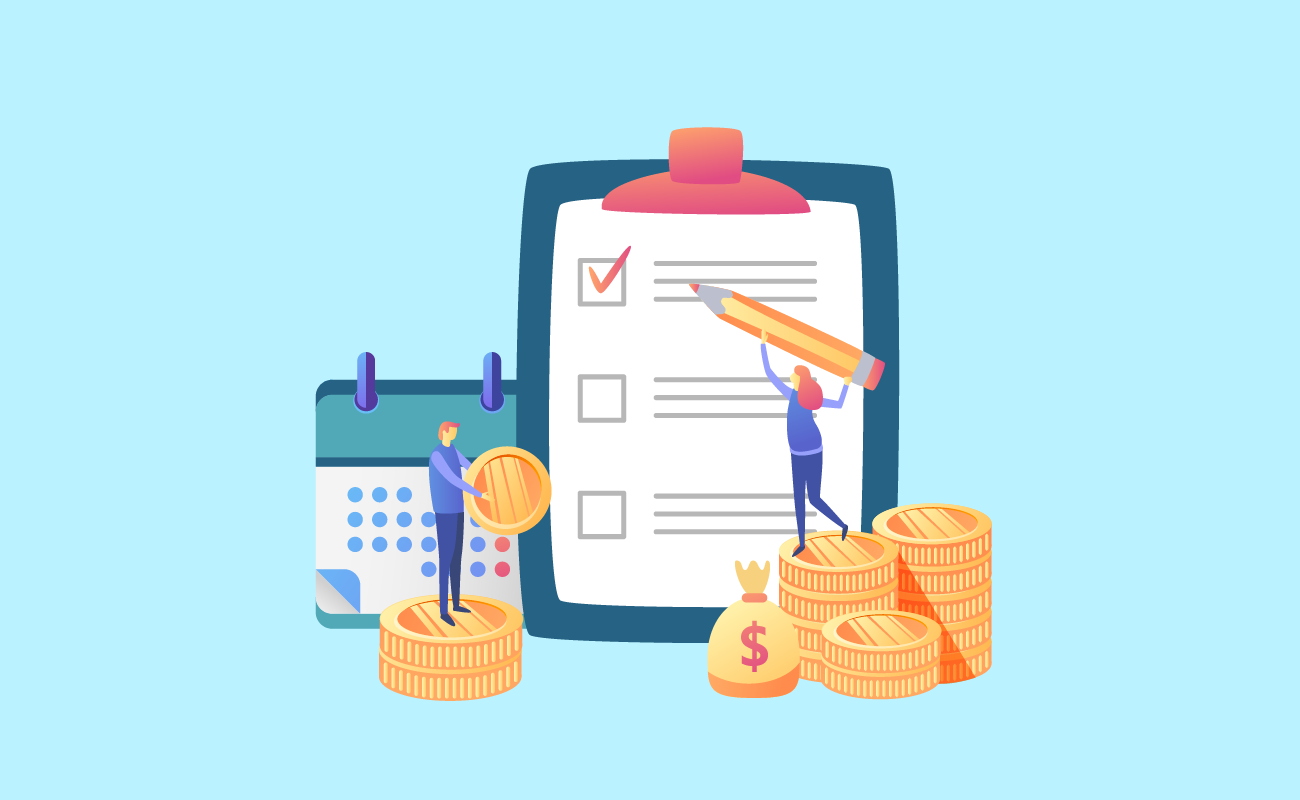

Getting The Most Out of Using This Calculator
Expand the drop downs for usage tips and suggestions. An in-depth guide offering money saving tips appears below the calculator. If you are considering refinancing at today's low rates, current Los Angeles refinance rates are published below.
Enter your normal mortgage information at the top of this calculator. You can optionally add your other homeownership expenses in the middle section. Then add any other additional payments you would like to make be it one-time, weekly, biweekly, monthly, quarterly or yearly. Then click on the calculate button to see your results.
One time payments will be applied on the date you specify. Recurring payments will be applied for the ranges you specify. By default recurring payments last the duration of the loan unless you select an earlier end date. Recurring weekly and biweekly payments will be converted into their monthly equivalents and added to your regular monthly payment.
You can combine mutliple extra payment types in parallel. For example you can add a one-time lump sum inheritance payment along with annual income tax rebate payments, annual holiday bonus payments and regular weekly, biweekly or monthly contributions.
If you would like to make multiple payments for ranges of time you can enter multiple one-time payments or other periodic payment types by clicking on the "Add Payment" link. The calculator is quite flexible. You could add 360 extra one-type payments or you could do an extra monthly payment of $50 for 2.5 years and then an extra monthly payment of $100 for 3 years, etc.
Once you have filled out all your information click on the calculate button to see the side-by-side results for your old loan and the loan with extra payments made.
At the bottom of the calculator there is also an option to turn on displaying a monthly amortization schedule showing your loan payment progress month-by-month.
US 10-year Treasury rates have recently fallen to all-time record lows due to the spread of coronavirus driving a risk off sentiment, with other financial rates falling in tandem. Homeowners who buy or refinance at today's low rates may benefit from recent rate volatility.
Are you paying too much for your mortgage? Refi at today's low rates and save!

Buying a house is one of the most expensive transactions people make. It requires careful financial preparation, from improving your credit score all the way to saving enough down payment. On top of this, you must shop for the lowest mortgage rate to save on interest charges. And once you sign the deal, you must budget for monthly mortgage payments.
Once you get keys to your home, you must keep planning your finances. If you want to reduce interest costs, you must budget for extra mortgage payments. This is advantageous if you have an extended loan, such as a 30-year mortgage. The added payments can cut years off your term and save thousands of dollars in interest costs.
Our guide below will talk about the benefits of making additional mortgage payments and how they work. Then, we’ll discuss different payment strategies you can take to maximize your extra payments. We’ll also talk about its disadvantages and other precautions you should take before making additional loan payments.

30-Year Mortgages and Extra Payments
Most homebuyers in America tend to obtain 30-year fixed-rate mortgages. As of June 2020, the Urban Institute reports that 30-year fixed-rate loans account for 77 percent of new mortgages in the market. Its popularity is due to low monthly payments and upfront costs. However, 30-year fixed mortgages usually come with 0.25 to 1 percent higher rates compared to 15-year fixed-rate loans. Freddie Mac publishes a graph showing the historical spread in their PMMS survey results. You pay more interest & higher interest rates with a longer loan term than a shorter one.
15-Year Mortgages
Fifteen-year fixed-rate loans come with higher monthly payments, which can easily turn off homebuyers who are looking for more affordable monthly payment. Lenders also require higher credit scores for shorter terms that increase your monthly debt service expenses. But if you have a 30-year fixed mortgage, you can still shorten your payment term by paying extra. You can use our 15 year calculator to see how much you would need to pay each month to extinguish your loan in 15 years & then try to regularly pay that amount to pay your loan off faster.
Pay Your Loan Off in X Years
You can use this calculator to see how much you would need to pay each month to extinguish your loan in a set number of years. Set the loan term to your goal years & then try to regularly pay that amount to pay your loan off faster.
To show how longer terms incur higher interest, the table below compares a 30-year fixed mortgage with a 15-year fixed mortgage.
Loan amount: $300,000
| Loan | 30-Year | 15-Year | Difference |
|---|---|---|---|
| Interest rate (APR) | 3.8% | 3.5% | 0.3% |
| Monthly Payment | $1,681.21 | $2,427.98 | $746.77 |
| Total Interest | $203,233.94 | $86,036.57 | $117,197.37 |
In the example above, a 30-year fixed mortgage comes with a $1,681.21 monthly payment. This is $746.77 cheaper than the 15-year fixed-rate term. However, the tradeoff for affordable monthly payments is higher interest charges. With a 30-year fixed loan, the total interest is $203,233.94, while you only pay $86,036.57 in interest for a 15-year fixed term. This cuts your interest cost by over half, saving you a total of $117,197.37.

It’s understandable why buyers are drawn to more affordable monthly payments. If you have less-than-pristine credit, a 30-year fixed loan may be the only mortgage option for you. Unless you increase your credit score, you may not be eligible for a shorter term with a lower rate. And frankly, it’s not a practical choice if your budget is tight.
That said, making additional payments is your next best move. This is an ideal strategy if you want to reduce interest charges and shorten your payment term by a few months up to several years.
Paying extra affords you the flexibility to contribute any amount. If you cannot commit to $700 in extra payments (such as a 15-year fixed loan), you can still prepay your mortgage in increments of $50 or $100. This fits your budget better, which is not as stressful as meeting an expensive monthly payment. But to maximize your interest savings, remember to be consistent with extra payments.

Ask About Prepayment Penalty First!
Before fully extinguishing your loan balance, ask your lender if your mortgage has a prepayment penalty clause. This costly fee can dwarf your interest savings from extra payments. Most conventional mortgages usually come with prepayment penalty. However, you can obtain a mortgage without one if your lender approves. Meanwhile, government-backed loans such as FHA, USDA, and VA loans don’t impose prepayment penalty.
A prepayment penalty is a fee lenders charge if you pay all or a percentage of your mortgage early. Some lenders may allow you to prepay your mortgage up to 20 percent. If you go over this, it can set off the penalty fee. Prepayment penalties take effect for a set period, usually between 3 to 5 years. This can keep homeowners from selling their new home in short notice. And if you want to shorten your term or refinancing into a lower rate loan, this fee can discourage you from prepaying your loan.
Before 2014 some lenders imposed high prepayment penalties that covered the entire life of the loan. Today prepayment penalties can only be applied for the first 3 years of a mortgage. If you got your loan before 2014, this law is not retroactive. Make sure to check your mortgage contract and ask your lender about prepayment penalty rules.
Small extra payments do not always trigger prepayment penalty. But it’s a good idea to check with your lender first. To avoid it, you can wait for the penalty term to lapse before making additional payments. Applying extra payments even after 3 years can still decrease your interest costs.

During the first several years of your mortgage, a larger part of your payment goes toward interest rather than the principal. This is how traditional amortizing loans work. Afterwards, a larger portion of your payment goes toward the principal during the latter years of the loan.
Interest is basically the cost of borrowing funds from your lender. It’s the payment they charge to service your loan. The longer you take to pay your debt, the higher interest accrues. Meanwhile, principal is the actual amount you borrowed from your lender. When you borrower a larger principal, it generates higher interest charges.
To learn how the principal amount impacts a loan’s overall interest cost, let’s see the table below.
| Mortgage | Loan 1 | Loan 2 |
|---|---|---|
| Principal | $300,000 | $400,000 |
| Rate | 3.8% APR | 3.8% APR |
| Term | 30-years | 30-years |
| Total interest | $203,235 | $270,978.59 |
In the first example, the principal is $300,000. The rate is 3.8 percent APR and the loan term is 30 years (fixed mortgage). The total interest cost is $203,235. Now, if we raise the principal to $400,000 while the rate and term remains the same, the total interest increases to $270,978.59.
When you increase the principal, it makes the interest cost higher. Interest also increases with a higher rate and longer term. Likewise, if you decrease any of these three factors, the interest is reduced. To slash interest costs, you can get a shorter term, a much lower rate, or borrow a lower principal amount. These are things you can do before signing a mortgage deal.
But once you obtain a loan, applying extra payments to your principal effectively diminishes its value. Over time, the lower principal helps decrease your interest cost.

Why Early Extra Payments Matter
Additional mortgage payments have the biggest impact during the first years of the loan. This is because the principal or outstanding balance is larger. You may think $50 or $100 a month is a small sum, but no amount is too small. Whatever extra you pay today is extinguished debt not accruing any further interest forever. The extra payments lower future interest for the remaining months and years, which becomes more apparent if you make extra payments in the early years.
Can you make payments directly to your principal? Yes. To make sure, ask your lender to apply them to the principal. It would be a waste if most of your extra money is applied to interest charges. Some lenders may charge fees if you request for principal-only payments. If they do, ask how much it costs. This will give you an idea if it’s worth paying directly to your principal.
On the other hand, some lenders automatically apply extra payments to the interest first. Which is why you must make this request directly. Always speak with your lender first before applying principal payments.
To understand how added payments work, take a look at the example below. Let’s say you took a 30-year fixed-rate loan at $300,000 with 3.8 percent APR. The table compares interest savings if you make additional payments of $50, $100, and $250 each month. To estimate savings with extra mortgage payments, use our calculator on top of this page.
| Mortgage | Original Payment | Extra $50 | Extra $100 | Extra $250 |
|---|---|---|---|---|
| Monthly Payment | $1,397.87 | $1,447.87 | $1,497.87 | $1,647.87 |
| Total Interest | $203,235 | $191,034.02 | $180,450.99 | $155,646.43 |
| Payment time | 30 years | 28 years, 2 mons | 26 years, 6 mons | 22 years, 8 mons |
| Time Saved | 0 | 1 year, 10 mons | 3 years, 6 mons | 7 years, 4 mons |
*The calculations above and below do not include annual real estate taxes and homeowner’s insurance.
Based on the table above, if you increase your extra payments, it reduces your interest charges. Higher payments also shorten your loan’s payment time.
By paying an extra $50 each month from the start, you’ll save $12,199.92 in interest charges. This cuts your payment time to 28 years and 2 months. If your extra payment is $100, you’ll save a $12,199.92 in interest costs. Your payment time will be reduced to 26 years and 6 months. Finally, if you pay an additional $250 per month, your interest savings will be $47,587.51. This shortens your payment time to 22 years and 8 months.
The example above accounts for monthly payments. Our calculator above can estimate other payment schedules such as weekly, quarterly, and annual payments. This allows you to calculate added payments on your preferred schedule.

Aside from adding an amount to monthly payments, there are other ways to make extra payments to your mortgage. These include the following strategies:
An added lump sum payment has the greatest impact if you pay it soon after taking your mortgage. It immediately reduces your principal compared to diminishing it in monthly increments. You can get a lump sum after receiving inheritance benefits or a windfall from a business venture. Applying the money toward your mortgage will yield greater interest savings.
To see how this works, let’s compare a loan with one that has an lump sum payment of $50,000.
| Mortgage | Original Loan | w/ Extra Lump Sum Payment |
|---|---|---|
| Extra Lump Sum Payment | 0 | $50,000 |
| Principal balance | $300,000 | $250,000 |
| Monthly payment | $1,397.87 | $1,397.87 |
| Total interest | $203,233.94 | $128,260.72 |
| Payment time | 30 years | 22 years |
| Time saved | 0 | 8 years |
Based on the above example, adding a lump sum payment of $50,000 reduces the principal to $250,000. Your monthly payment also stays the same at $1,397.87. While you keep paying the same amount, this reduces your payment term to 22 years. With the original loan, the total interest is $203,233.94. The extra lump sum payment decreases the total interest to $128,260.72. This saves you $74,973.22 in interest costs.
Another strategy is to make an additional mortgage payment a year. The amount should be equivalent to one monthly payment. Instead of 12 payments annually, you can add a 13th payment. To make it more convenient, schedule this when you receive your year-end work bonus. Pay it by the end of the year or the start of the new year. It’s a great way to ensure your hard-earned money is put to good use.
The table below compares a loan with one that makes an extra mortgage payment annually.
| Mortgage | Original Loan | w/ Extra Mortgage Payment a Year |
|---|---|---|
| Extra Mortgage Payment a Year | 0 | $1,398 |
| Monthly payment | $1,397.87 | $1,397.87 |
| Total interest | $203,233.94 | $176,273.57 |
| Payment time | 30 years | 27 years, 4 mons |
| Time saved | 0 | 3 years, 8 mons |
According to our example, if you make an extra mortgage payment each year, it reduces your interest cost to $176,273.57. This saves you a total of $26,960.36 in interest charges. It also shortens your loan term to 27 years and 4 months.
Next, you can choose a biweekly payment plan, which is paid every other week. This strategy takes advantage of the 52-week schedule in the calendar. Using this method, you are splitting your monthly mortgage payments into 26 biweekly payments. By the end of the year, this is equivalent to 13 monthly payments instead of the usual 12. If you have a biweekly salary period, you can synchronize this with your mortgage payments.
Biweekly payments are calculated using the following standard amortization formula:
A = P*(r(1+r)n) / ((1 + r)n – 1)
Where:
On the other hand, if you want to reduce your principal faster, you can go for an accelerated biweekly payment schedule. This is also calculated using the standard amortization formula, but the resulting periodic payment amount is divided by 2. The amount is larger than a regular biweekly payment, which lowers your principal faster. Below is the formula for an accelerated biweekly payment:
A = [P*(r(1+r)n) / ((1 + r)n – 1)] / 2
To understand how this works, let’s compare a regular loan with loans using a biweekly payment and an accelerated biweekly schedule.
| Mortgage Details | Monthly Payments | Biweekly Payments | Accelerated Biweekly Payments |
|---|---|---|---|
| Payment amount | $1,397.87 | $645.17 | $698.94 |
| Total interest | $203,233.94 | $202,806.01 | $172,373.43 |
| Interest savings | 0 | $427.93 | $30,860.51 |
| Payment time | 30 years | 29 years, 11 mons | 26 years |
| Time saved | 0 | 1 month | 4 years |
The example above shows a biweekly payment saves you $427.93 in interest charges. Meanwhile, you’ll save a total of $30,860.51 in interest costs if you choose an accelerated biweekly payment plan. By paying an extra $53.76 every other week, you can prepay your mortgage in 26 years instead of 30 years.

Beware of Third-Party Payment Services
Biweekly payment schedules can be arranged with your bank, with some banks providing this service for free. In other cases, you might need to apply for a third-party processing service. This comes with setup fees, which may very well go to your mortgage payments. Furthermore, many of these third-party processing companies are scams. They hold on to your payments and pay them per month. This defeats the purpose of making accelerated biweekly payments in the first place. Before signing up, make sure your payments will be applied correctly.
On the other hand, there are instances where your lender might not allow a biweekly payment schedule. When this happens, you can still replicate this type of debt reduction.
How do you do this? Take your monthly mortgage payment and divide it by 12. The resulting amount will be the extra payment that should go to your principal each month. In this arrangement, you still make monthly payments. However, you’re adding the equivalent amount that you would have paid under an accelerated biweekly plan. Over time, this will substantially reduce your principal balance.

There are a couple of disadvantages to additional mortgage payments. First, it ties up your income into your home. While you gain home equity quickly, it gives you less liquidity and room for other expenses in your budget. When you have less cash, you cannot put as much funds into emergency savings, your child’s college tuition, or your 401(k) retirement funds.
The next thing to consider is the opportunity cost. When you prioritize mortgage payments, you cannot invest your money toward other worthwhile ventures. If you’re thinking of investing in stocks or putting up a new business, these will have to wait if you choose to prepay your mortgage.
Moreover, if you have high-interest credit card debts, you won’t have as much cash to pay them down. Thus, before prepaying your mortgage, it’s best to allocate finances toward large debts. Prioritize debts before they get much worse. In the long run, this will free up your cash flow. Without large debts, you can place more of your income into other important funds, such as your retirement plan.
Before making added payments to prepay your mortgage, ask yourself these following questions. These will help you decide if prioritizing your mortgage is more important that other expenses.
Reflect on your financial goals while thinking of your income and your current budget. This will help you decide what financial problems to address first before prepaying your mortgage.
Making additional mortgage payments is a great way to slash interest costs from your loan. It even shortens your payments term up to several years. If you can afford to make extra payments, there are different strategies to prepay your mortgage. You can add a consistent amount to your monthly payment. If you have a windfall, you can make a large lump sum payment which immediately decreases your principal. You also have the option to get an accelerated biweekly mortgage payment to pay down your loan faster.
However, before applying extra payments, be sure to ask your lender about prepayment penalty. This usually takes effect during the first 3 to 5 years of a loan. Ask how much you can pay before you trigger the penalty fee. You can also wait for the penalty period to lapse before making additional payments.
Finally, before deciding to prepay your mortgage, make sure to assess your current financial situation. Can you afford to commit to extra payments? Do you have large debts you need to pay? Perhaps you need to prioritize building emergency funds. Besides other important financial concerns, paying your mortgage is a good way to use your income.
US 10-year Treasury rates have recently fallen to all-time record lows due to the spread of coronavirus driving a risk off sentiment, with other financial rates falling in tandem. Homeowners who buy or refinance at today's low rates may benefit from recent rate volatility.
Are you paying too much for your mortgage?
Check your refinance options with a trusted Los Angeles lender.
Answer a few questions below and connect with a lender who can help you refinance and save today!